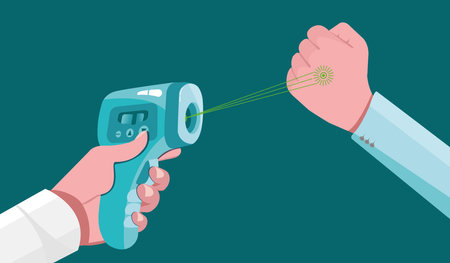1. Understanding Ethnic Skin and Laser Sensitivities
When considering post-treatment care protocols for ethnic skin following laser procedures, it is crucial to first appreciate the distinctive qualities that characterise skin of diverse backgrounds. In the UK, communities are made up of individuals with a wide range of skin tones and types, including Black, Asian, Middle Eastern, Mediterranean, and mixed heritage backgrounds. Ethnic skin often contains higher levels of melanin, which not only contributes to its beautiful depth of colour but also impacts how it responds to certain dermatological treatments—lasers in particular.
One of the most significant concerns when treating ethnic skin with laser technology is the increased risk of adverse reactions such as hyperpigmentation, hypopigmentation, and scarring. These risks arise because melanin-rich skin can absorb more laser energy, making it more susceptible to post-inflammatory pigmentation changes. Additionally, cultural practices and environmental factors unique to the UK’s diverse communities can influence both baseline skin health and healing responses.
It is therefore essential for practitioners and clients alike to understand these sensitivities prior to any treatment. By recognising the unique needs of ethnic skin, especially in the context of laser procedures, we lay a strong foundation for effective aftercare that is both safe and tailored to the individual. This knowledge empowers you to make informed decisions about your skincare journey, ensuring that every step taken is with confidence and respect for your natural complexion.
Immediate Post-Laser Care Recommendations
Step-by-Step Self-Care for the First 48 Hours
The initial 48 hours following a laser procedure are vital, especially for ethnic skin, which may be more prone to hyperpigmentation or sensitivity. Taking gentle, well-considered steps at this stage can dramatically improve outcomes and foster your skin’s natural resilience.
Step 1: Soothe and Cool
Directly after your treatment, prioritise calming your skin. Use a clean, cool compress (such as a soft flannel soaked in chilled boiled water) to reduce warmth and redness—avoid ice packs directly on the skin to prevent irritation.
Step 2: Cleanse with Care
Opt for a fragrance-free, UK-sourced gentle cleanser—look for brands such as Cetaphil or Simple. Gently cleanse twice daily using lukewarm water; avoid scrubbing or using washcloths that could aggravate the treated area.
Step 3: Hydrate and Protect
Moisturising is crucial. Apply a hypoallergenic, non-comedogenic moisturiser, ideally with ceramides or hyaluronic acid, to support barrier recovery. Products like CeraVe or E45 Cream are widely available across the UK and suitable for sensitive ethnic skin.
Recommended Product Table
| Step | Product Type | UK-Available Examples |
|---|---|---|
| Soothe & Cool | Cooled compress | Clean muslin/flannel with boiled water |
| Cleanse | Fragrance-free cleanser | Cetaphil Gentle Skin Cleanser, Simple Kind To Skin Cleanser |
| Hydrate & Protect | Gentle moisturiser | CeraVe Moisturising Cream, E45 Cream |
Step 4: Avoid Heat and Sunlight
Avoid hot showers, saunas, or direct sun exposure. Ethnic skin is particularly susceptible to post-inflammatory pigmentation. Stay indoors where possible and use wide-brimmed hats if you must go outside.
Step 5: Say No to Harsh Products
Refrain from using exfoliants, retinoids, vitamin C serums, or any active ingredients for at least one week unless otherwise directed by your practitioner.
Your Gentle Pathway to Recovery
Treating your skin with patience and respect during these crucial early days sets the foundation for optimal healing and long-term radiance. Always consult with your practitioner about any concerns unique to your individual skin type and needs.
![]()
3. Managing and Minimising Post-Treatment Pigmentation
For individuals with ethnic skin, post-laser pigmentation changes—such as hyperpigmentation (darkening) or hypopigmentation (lightening)—are among the most common concerns following treatment. British dermatologists who specialise in skin of colour emphasise a proactive and gentle approach to prevent these complications and promote optimal healing.
Understanding Your Skin’s Unique Response
Ethnic skin contains more active melanocytes, which are responsible for producing pigment. This means your skin may react to trauma, such as laser procedures, by increasing pigment production or occasionally reducing it. Recognising this unique response is the first step towards effective post-treatment care.
Tips from UK Dermatologists to Prevent Hyperpigmentation
- Strict Sun Protection: The British weather can be deceptive; even on cloudy days, UV rays penetrate and stimulate melanocytes. Apply a broad-spectrum SPF 50 sunscreen every morning, reapplying every two hours if you’re outdoors. A physical blocker containing zinc oxide or titanium dioxide is highly recommended.
- Avoid Heat Exposure: Saunas, steam rooms, and hot showers can exacerbate pigmentation issues. Keep your skin cool and avoid intense exercise for at least a week post-procedure.
- No Picking or Scrubbing: Resist the urge to touch, pick, or exfoliate treated areas. Trauma can trigger excess pigment production in ethnic skin types.
Prevention of Hypopigmentation
- Follow Professional Advice: Adhere strictly to aftercare instructions provided by your practitioner. Overuse of bleaching creams or harsh products should be avoided unless specifically prescribed by your dermatologist.
- Moisturise Religiously: Keeping the skin barrier intact is crucial. Use fragrance-free emollients recommended by UK professionals such as E45 or Cetraben to support healing and prevent patchy lightening.
When to Seek Further Advice
If you notice persistent darkening or light spots that last beyond a few weeks, consult your British dermatologist promptly. Early intervention with prescription creams or additional guidance can make all the difference in restoring even skin tone and preventing long-term issues. Remember: caring for your skin after laser treatment isn’t just about routine—it’s about respecting its unique heritage and responding with patience and expertise.
4. Soothing and Hydration Protocols
After undergoing laser procedures, ethnic skin often requires a delicate balance of soothing and hydration to foster optimal recovery. Recognising the diversity of skin tones and textures across the UK, it’s essential to recommend products and routines that are both culturally aware and widely accessible.
Culturally Considerate Product Choices
Many individuals with ethnic skin benefit from formulations that prioritise gentle, fragrance-free ingredients, avoiding common irritants such as alcohol or harsh preservatives. The following table highlights some trusted options available at leading UK pharmacies, ensuring accessibility and cultural sensitivity:
| Product Type | UK Pharmacy Favourite | Key Benefits for Ethnic Skin |
|---|---|---|
| Soothing Gel/Cream | E45 Cream | Fragrance-free, suitable for sensitive skin, helps relieve irritation |
| Hydrating Serum | Cetaphil Hydrating Serum | Lightweight, non-comedogenic, supports moisture retention without clogging pores |
| Barrier Repair Ointment | Cetraben Ointment | Intense moisturisation, protects against transepidermal water loss (TEWL) |
| Mild Cleanser | Simple Kind to Skin Facial Wash | No artificial perfume or colour, gentle on all skin types |
| Sterile Saline Spray | Boots Pharmaceuticals Sterile Saline Solution | Cools and soothes without stinging or residue; ideal for fresh post-laser skin |
Gentle Recovery Routines for Every Day
The key to supporting ethnic skin post-laser is consistency with gentle routines. A simple yet effective daily protocol can make all the difference:
- Cleansing: Use a mild cleanser twice daily—morning and evening—to remove debris without stripping essential oils.
- Hydration: Immediately follow cleansing with a hydrating serum or lightweight moisturiser to lock in moisture.
- Soothe & Protect: Apply a barrier repair ointment or cream to calm irritation and support the skin’s natural healing process.
- Avoid Over-Touching: Minimise unnecessary contact with treated areas to reduce the risk of infection or delayed healing.
- No Fragrance or Harsh Actives: Steer clear of perfumed products, exfoliants, and acids during the initial recovery phase.
- Daytime Care: Always finish your morning routine with a broad-spectrum SPF specifically formulated for darker skin tones (look for transparent or sheer formulas that avoid white cast).
A Gentle Reminder from British Pharmacy Wisdom
The UK’s high street pharmacies are renowned for their reliable, affordable skincare staples. Don’t underestimate the power of simple, time-honoured products—often less is more when it comes to nurturing post-procedure skin. Trust in gentle solutions, listen to your skin’s unique needs, and allow patience to guide your recovery journey.
5. Sun Protection and Environmental Considerations
When it comes to post-laser care for ethnic skin, sun protection is absolutely essential—even in the often overcast British climate. Although the UK is not known for intense sunlight year-round, ultraviolet (UV) rays are still present and can significantly affect healing and pigmentation after laser procedures. Ethnic skin, with its higher melanin content, is more prone to post-inflammatory hyperpigmentation (PIH), making diligent sun care non-negotiable.
Understanding the Risks in the British Climate
Don’t be lulled into a false sense of security by grey skies. UV radiation penetrates clouds and windows, so daily sun protection is vital even when the weather seems mild. Pollution and sudden changes in temperature—common in British cities—can also impact your skin’s recovery, so environmental awareness should be part of your post-treatment plan.
Choosing the Right SPF: What Works for Diverse Skin Tones?
Selecting an appropriate sunscreen can feel daunting, especially if you’ve struggled with white casts or greasiness in the past. For individuals with deeper skin tones, opt for broad-spectrum SPFs of at least 30 that are labelled as “invisible,” “sheer,” or “for all skin tones.” In the UK, several brands now offer formulations that blend seamlessly without residue, such as La Roche-Posay Anthelios Invisible Fluid SPF50+, Supergoop! Unseen Sunscreen SPF30, and Black Girl Sunscreen SPF30—readily available both online and in high street chemists.
Practical Daily Habits for Sun Safety
- Apply SPF every morning, not just on sunny days. Reapply every two hours if you’re outdoors or after sweating.
- Use physical barriers like wide-brimmed hats or UV-protective umbrellas when outside for extended periods.
- Pay special attention to commonly forgotten areas: ears, neck, and around the eyes.
A Gentle Reminder
Your commitment to daily sun protection isn’t just about avoiding sunburn; it’s about empowering your healing process and preserving even skin tone after treatment. By making these habits part of your routine, you’re investing in healthy, resilient skin that glows with confidence—no matter what the British weather throws your way.
6. When to Seek Professional Advice
While following your post-treatment care protocols is essential for optimal recovery, it is equally important to recognise when professional intervention may be necessary. Ethnic skin can sometimes react unpredictably to laser procedures, and being proactive about potential complications ensures your skin’s health and safety.
Recognising Warning Signs
After a laser procedure, some mild redness, swelling, or sensitivity is quite normal. However, you should remain vigilant for certain warning signs that could indicate complications. These include:
- Persistent redness or swelling lasting more than a week
- Development of blisters, open sores, or significant crusting
- Unexpected changes in pigmentation, such as darkening (hyperpigmentation) or lightening (hypopigmentation)
- Intense pain that does not improve with standard over-the-counter remedies
- Signs of infection, including pus, spreading redness, warmth, or fever
How and When to Approach Your Local NHS or Private Clinic
If you notice any of the symptoms listed above, don’t hesitate to contact your practitioner or clinic. In the UK, you have the choice between seeking support from your local NHS service or a private clinic where you had your treatment. For urgent concerns—such as signs of infection or severe allergic reactions—contact your GP or call NHS 111 for immediate advice. For less urgent issues like pigmentation changes or prolonged discomfort, reach out to your treating clinic. Most reputable clinics offer follow-up appointments and are happy to discuss any worries you may have.
Your Right to Support
You deserve peace of mind throughout your healing journey. Never feel hesitant about seeking help; early intervention can prevent minor concerns from developing into more serious issues. Remember, the NHS is there for everyone in the UK, and many private clinics pride themselves on their aftercare services.
Final Thoughts
Tuning in to your skin’s needs and knowing when to ask for professional advice is an act of self-care and empowerment. Stay attentive to any changes, trust your instincts, and always prioritise your well-being. With proper guidance and timely support, you’ll give your ethnic skin the best chance to recover beautifully after laser procedures.


